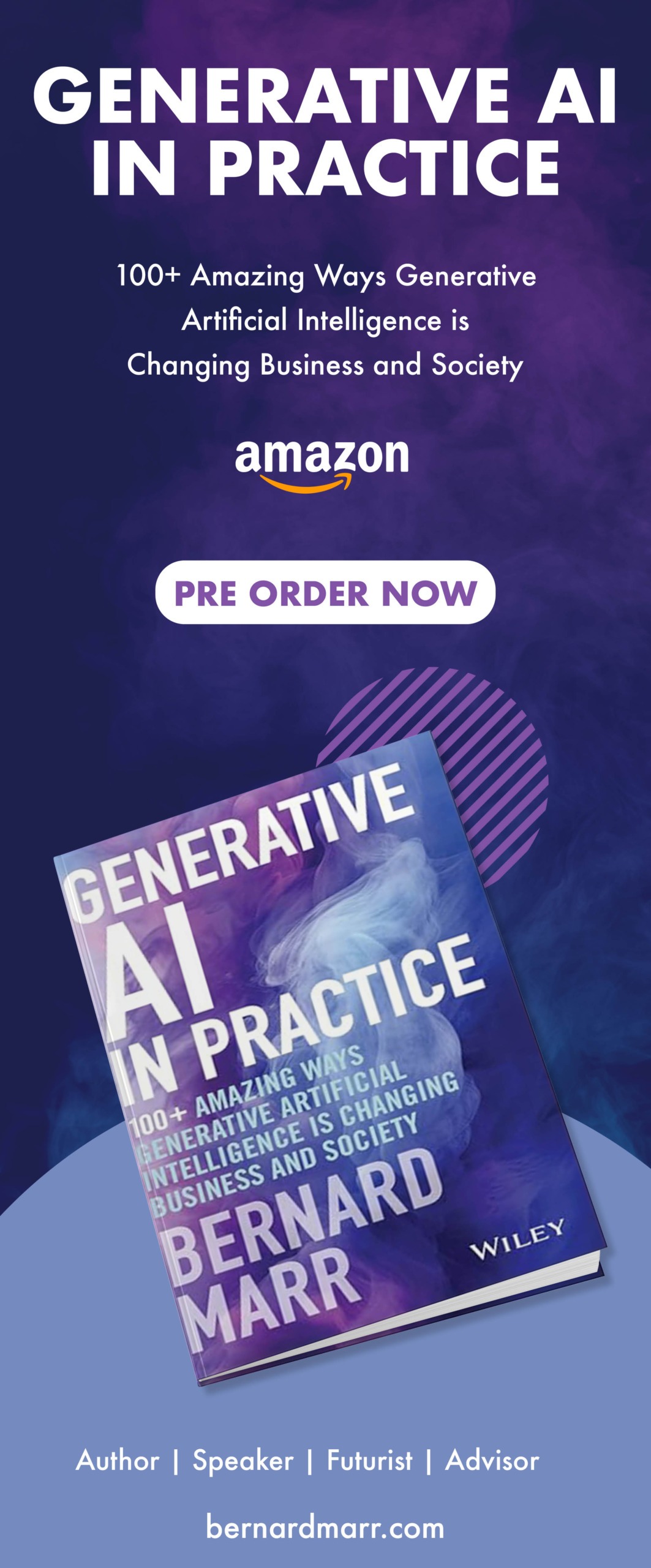Why Every Company Needs A Chief AI Officer
29 August 2023
Artificial intelligence (AI) is no longer the future; it’s the everyday. We’ve become so accustomed to tapping into it for day-to-day tasks like searching the internet or choosing a movie to watch we barely even register that we’re using it.

Now, the advent of generative tools like OpenAI’s ChatGPT and Google’s Bard means that the power and transformative potential of AI is in the hands of every business, big or small.
Every day I work with businesses that are finding exciting new ways to put this technology to work. This can involve creating exciting new services, driving improved efficiency, or even disrupting entire industries.
I believe AI is so important and would be so disastrous to ignore that it needs to be recognized in the core business strategy of every organization. For most, an important step towards getting this done will be the appointment of a Chief AI Office (CAIO).
This is a role we are sure to hear more and more about as time goes on. So, let’s take a look at what it entails – what are the key responsibilities of the CAIO, how are they different from other C-level staff, and what type of person is likely to be a good fit?
Responsibilities Of The CAIO
To sum up the role of the CAIO in one sentence, their job is to take oversight of their organization’s entire AI strategy in order to align it with business goals.
Breaking it down a little further, their responsibilities will include:
Identifying opportunities to deploy AI in existing business processes. This could mean automating day-to-day tasks, improving efficiency and reducing waste.
Identify opportunities to drive new business with AI.
Identifying which processes are ready to be automated and which need to be rethought or rebuilt in order to be automated.
Ensuring the skills and people are in place to effectively execute the AI strategy.
Fostering a culture of AI-driven innovation – ensuring that everyone understands why AI is important to the future of the business and how it will affect their role.
Dealing with issues of ethics, regulation and compliance that involve AI.
How Is A CAIO Different From A CDO?
Much of what the CAIO does could be seen as a subset of what the CDO does; however, their time is spent specifically on tasks that involve AI.
For example, while a CDO might take the lead around managing data compliance and regulations, they would hand over to the CAIO when it comes to dealing with legislation specifically dealing with data as it relates to AI.
Similarly, while the CDO would work to ensure the organization has the right people and skills in place to capitalize on data opportunities, the CAIO specifically looks to plug gaps in the team or in the organization’s skillset that involve AI.
The requirement for the CAIO stems from the fact that tasks and responsibilities involving AI are set to become such a big part of the CDO or the Chief Technology Officer’s workload that it requires a dedicated senior-level executive person to manage effectively. Effectively, although the skillsets required across both jobs may seem quite similar, the workloads are likely to differ considerably. And the gap will continue to widen as the organization becomes more mature in its use of AI.
Who Makes A Good CAIO?
The truth is that every CAIO’s role will be different – the AI strategy at, for example, a software business might be very different from one with a sports team or a governmental organization.
However, there are a few key traits that are likely to be important wherever an AI-focused senior executive is needed.
Obviously, some level of technical know-how is essential, as they need to understand the tools and infrastructure that the organization is working with. Just as importantly, though, the job also requires a range of “soft” skills – taking in communications, decision-making, teamworking, creative problem solving and time management.
They will also need an understanding of today’s business AI landscape as well as the breakthrough developments that are on the horizon. This is the business side of AI – covering what it does rather than how it does it. In particular, they should understand the impact that specific AI technologies – generative AI, computer vision, natural language processing, and so on, are having on their industry and how this will evolve in the future.
It should probably go without saying that they need to be an ethical person who is able to understand issues around ethical use of AI and the challenges around bias, privacy, and the impact of AI on human jobs and society.
Of course, as with any executive, they need to be a good leader – able to communicate ideas effectively, deal with people fairly and understand how to get the best out of everyone whose work they have responsibility for.
Altogether, this means that the effective CAIO will have a wide spectrum of skills that include technical, business and interpersonal skills.
They might not be an easy find. But with AI set to add trillions of dollars of value to economies, it’s one that's likely to be worth investing in and getting right.
Related Articles
The 12 Best Smart Home Devices Transforming Homes in 2025
By now, “smart” versions exist of just about every home appliance, gadget and gizmos we can think of. However, manufacturers continue[...]
11 Most Reliable AI Content Detectors: Your Guide To Spotting Synthetic Media
Since the launch of ChatGPT just two years ago, the volume of synthetic – or fake – content online has increased exponentially.[...]
The AI-Powered Citizen Revolution: How Every Employee Is Becoming A Technology Creator
Something remarkable is happening in organizations around the world.[...]
6 Mistakes IT Teams Are Guaranteed To Make In 2025
The next wave of artificial intelligence isn't just knocking at enterprise doors - it's exposing fundamental flaws in how organizations approach technology transformation.[...]
2025’s Tech Forecast: The Consumer Innovations That Will Matter Most
Consumer technology covers all of the tech we buy to make our lives more convenient, productive or fun.[...]
7 Healthcare Trends That Will Transform Medicine In 2025
Healthcare has evolved dramatically in recent years, with technology driving countless new opportunities, just as demographic and societal factors have created new challenges.[...]
Sign up to Stay in Touch!
Bernard Marr is a world-renowned futurist, influencer and thought leader in the fields of business and technology, with a passion for using technology for the good of humanity.
He is a best-selling author of over 20 books, writes a regular column for Forbes and advises and coaches many of the world’s best-known organisations.
He has a combined following of 4 million people across his social media channels and newsletters and was ranked by LinkedIn as one of the top 5 business influencers in the world.
Bernard’s latest book is ‘Generative AI in Practice’.










Social Media